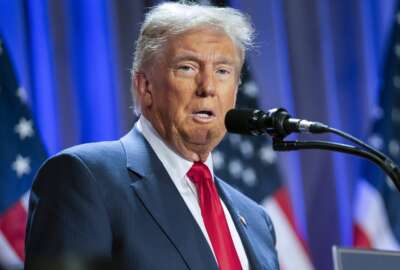Former Undersecretary says cap-and-trade bill is problematic
By Emily Jarvis Internet Editor FederalNewsRadio.com Lawmakers are debating a cap-and-trade system designed to put more limits on the pollution emitted by compa...
wfedstaff | June 2, 2015 10:30 pm
By Emily Jarvis
Internet Editor
FederalNewsRadio.com
Lawmakers are debating a cap-and-trade system designed to put more limits on the pollution emitted by companies.
The cap-and-trade system would be aimed at reducing carbon dioxide emissions, as part of a global agreement on CO2 reduction.
The new system is modeled after the successful sulfur dioxide cap-and-trade system.
The House Energy and Commerce Committee recently approved the Waxman-Markey cap-and-trade bill. The bill would reduce allowable CO2 emissions to 83 percent of the 2005 level by 2020, then gradually decrease the amount.
Dr. Robert Shapiro, the former Under Secretary of Commerce for Economic Affairs in the Clinton Administration, told Tom Temin on the Federal Drive, “This is really quite a complex challenge, because you would have to be monitoring emissions or more likely energy use. Not only initially when the permits are being distributed but also after every trade, because some energy producers will be buying more permits and others will be selling permits. It’s a very complicated challenge.”
Federal agencies would have to take an active role in monitoring the CO2 output. “It would require quite an elaborate monitoring and enforcement system which would involve a lot of people, and a whole new administrative structure,” said Shapiro.
Shapiro warns, “Cap-and-trade regimes that set a quantity cap on anything tend to produce volatile prices, because we can’t really predict energy demand on any real precision, because the winter may be colder than expected or the summer hotter than expected or the economy stronger than expected. When demand goes up because the number of permits has been set at a cap, the price for those permits begins to go up very quickly, or down if you estimated in the other direction. As this volatility increases you may get much more rapid trading in permits, so not only would there be this very large administrative challenge it would be subject to a lot of changes.”
The Congressional Budget Office estimated the resulting increases in consumer prices needed to achieve the CO2 reduction in the bill would raise the cost of living of a typical household by $1,600 a year.
“The bill also provides ‘offsets’ to power companies and energy intensive industries letting them emit more greenhouse gases so long as they take offsetting steps such as planting trees,” said Shapiro in his blog posting.
Shapiro believes a carbon tax would require much less administrative work by federal workers.
Copyright © 2024 Federal News Network. All rights reserved. This website is not intended for users located within the European Economic Area.





